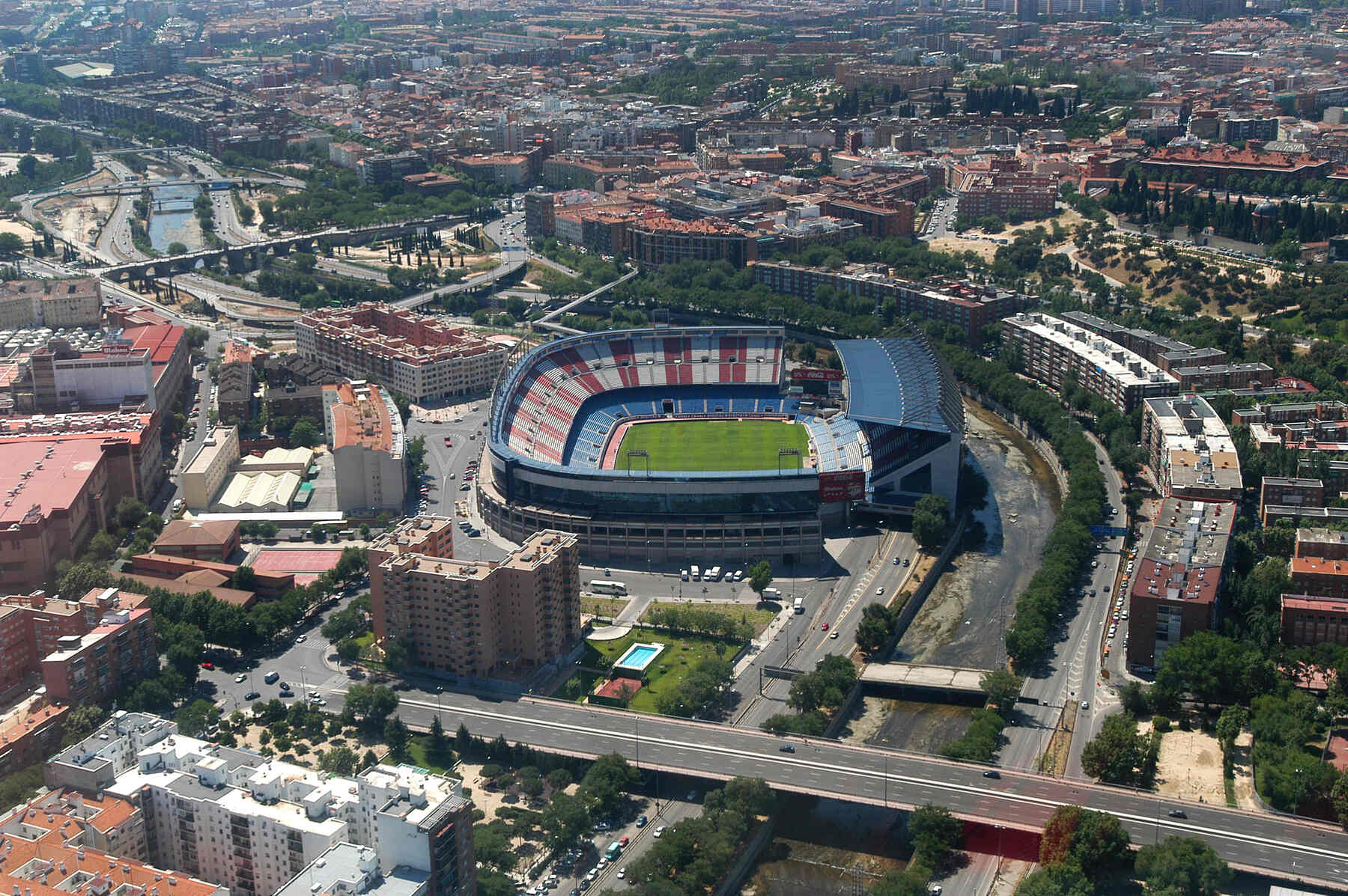
The Vicente Calderón Stadium, located in Madrid, Spain, was the iconic home of Atlético Madrid football club from 1966 to 2017. Named after a former club president, the Vicente Calderón Stadium was not only a sporting venue, but a symbol of pride and passion for the club and its passionate fanbase.
Now defunct, the stadium holds a significant place in the hearts of football enthusiasts and stands as a testament to the rich history of Atlético Madrid. Throughout its existence, the Vicente Calderón witnessed countless thrilling matches, historic moments, and unforgettable goals.
In this article, we will delve into nine intriguing facts about the Vicente Calderón Stadium, shedding light on its architectural significance, memorable events, and the legacy it has left behind. So, sit back and join us on this journey to explore the fascinating world of the Vicente Calderón Stadium.
Key Takeaways:
- Vicente Calderón stadium was a legendary home to Atletico Madrid for over 50 years, hosting historic football moments and the 1982 FIFA World Cup matches.
- After bidding farewell in 2017, the iconic Vicente Calderón stadium was demolished to make way for new developments, marking the end of an era in Madrid’s football history.
The Vicente Calderón stadium was home to Atletico Madrid for over 50 years.
The stadium, located in Madrid, Spain, was the iconic home ground of Atletico Madrid from 1966 until 2017.
It had a seating capacity of 54,907.
Vicente Calderón stadium was known for its electric atmosphere, with thousands of fans passionately cheering for their beloved team.
The stadium was named after a former club president.
Vicente Calderón, the namesake of the stadium, was a long-serving president of Atletico Madrid, known for his dedication to the club.
It hosted the 1982 FIFA World Cup matches.
The Vicente Calderón stadium played a significant role in the hosting of the 1982 World Cup, hosting several important matches, including a semi-final.
The stadium witnessed numerous memorable moments in football history.
From Diego Maradona scoring a famous solo goal in 1987 to Sergio Aguero’s last-minute title-winning goal in 2014, the Vicente Calderón stadium was the stage for unforgettable football moments.
It had a unique design with a moat surrounding the pitch.
The stadium’s design was characterized by a moat separating the seating areas from the playing field, creating a distinctive feature.
The final match played at Vicente Calderón stadium was a legend-filled affair.
In May 2017, Atletico Madrid bid farewell to their historic home with a match that included legendary players such as Fernando Torres and Luis Figo.
The club relocated to the Wanda Metropolitano stadium.
Following the closure of Vicente Calderón, Atletico Madrid moved to their new state-of-the-art stadium, the Wanda Metropolitano.
Its demolition began in 2019 to make way for new developments.
The iconic Vicente Calderón stadium was demolished to make room for residential and recreational spaces as part of Madrid’s urban redevelopment plan.
Conclusion
In conclusion, Vicente Calderón was a legendary stadium with a rich history and countless memories for football fans around the world. From its humble beginnings to its eventual closure, it stood as a symbol of passion and dedication. The stadium witnessed historic moments, celebrated victories, and heartbreaks for both Atletico Madrid and the Spanish national team. Its unique architectural design and strategic location made it a landmark in Madrid’s skyline.Although Vicente Calderón is no longer standing, its legacy lives on. The memories created within its walls will forever be cherished by fans and players alike. As football continues to evolve, new stadiums take its place, but the spirit of Vicente Calderón will never be forgotten. Its name will always be synonymous with great football and indescribable emotions.Farewell, Vicente Calderón. You will forever hold a special place in the hearts of football fans worldwide.
FAQs
1. When was Vicente Calderón stadium inaugurated?
Vicente Calderón stadium was inaugurated on October 2, 1966.
2. Why is Vicente Calderón stadium now defunct?
The stadium was closed in May 2017 and subsequently demolished to make way for new developments in the area.
3. What was the seating capacity of Vicente Calderón stadium?
The stadium had a seating capacity of approximately 54,907 spectators.
4. Which football team used Vicente Calderón stadium as their home ground?
Atletico Madrid used Vicente Calderón stadium as their home ground for over 50 years until their move to the Wanda Metropolitano stadium in 2017.
5. What were some of the memorable moments at Vicente Calderón stadium?
Some of the memorable moments include Atletico Madrid winning La Liga in 2014 and reaching the UEFA Champions League final in 2014 and 2016.
6. What will happen to the land after Vicente Calderón’s demolition?
After the demolition of Vicente Calderón, the land is being repurposed for new residential and commercial projects.
7. Is there a museum or commemorative space dedicated to Vicente Calderón?
No, there is currently no dedicated museum or commemorative space for Vicente Calderón. However, the memories of the stadium live on through the fans and the historic moments that took place there.
8. Are there any plans to build a new stadium in place of Vicente Calderón?
No, Atletico Madrid’s current home stadium is the Wanda Metropolitano, which was inaugurated in 2017 after the closure of Vicente Calderón.
9. Can visitors still take a tour of the Vicente Calderón stadium?
No, as the stadium no longer exists, there are no tours available for visitors to Vicente Calderón.
Embark on a thrilling journey through Spanish football history, exploring iconic stadiums like Surakarta Stadium and uncovering fascinating facts about clubs such as Sd Ponferradina. Immerse yourself in the vibrant culture of Madrid, a city renowned for its passionate fans and legendary teams. From the unforgettable matches played at Vicente Calderón to the modern marvels of contemporary arenas, each destination offers a unique glimpse into the heart and soul of the beautiful game. So, whether you're a die-hard fan or simply curious about the sport's rich heritage, join us as we uncover the stories behind these remarkable places and clubs.
Was this page helpful?
Our commitment to delivering trustworthy and engaging content is at the heart of what we do. Each fact on our site is contributed by real users like you, bringing a wealth of diverse insights and information. To ensure the highest standards of accuracy and reliability, our dedicated editors meticulously review each submission. This process guarantees that the facts we share are not only fascinating but also credible. Trust in our commitment to quality and authenticity as you explore and learn with us.


